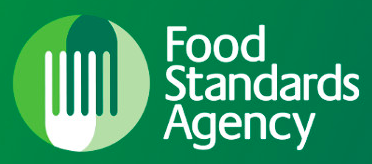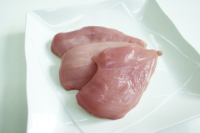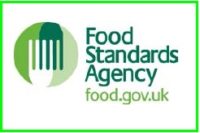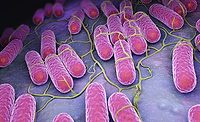The UK’s Food Standards Agency (FSA) has reported this week that there was a significant decline in the number of human cases of Campylobacter in 2016.
FSA analyzed a number of laboratory reports and a host of other factors to determine that the region experienced a 17 percent decline in Campylobacter cases--a numerical decline of about 100,000. This reduction in cases has a number of positive implications. The FSA’s board has met its agreed upon goal for the year. Fewer cases is expected to save the UK economy over £13 million (equivalent to just under $16 million) in terms of days off from work and other expenses paid by the UK’s National Health Service.
The region has also been routinely tracking levels of Campylobacter in fresh, store-bought whole chickens for three years. The latest data--measuring August through December 2016--tells us the following:
The results show a decrease in the number of birds with the highest level of contamination compared to the same months in 2015 and 2014. The new data show 7 percent of chickens tested positive for the highest level of contamination, down from 12 percent for the same period in 2015 and 20 percent in 2014. Research has shown that reducing the proportion of birds in this category will have the biggest positive impact on public health.
The percentage of chickens that tested positive for the presence of Campylobacter at any level is 56 percent, down from 66 percent in 2015 and 78 percent in 2014. This includes samples with very low levels of Campylobacter, which would be unlikely to cause illness.
The retailers that had the highest percentage of positive Campylobacter skin samples included M&S and Aldi, among smaller retailers, independent stores and butchers that were not named. The same stores also had the highest concentration of Campylobacter on skin samples tested.
FSA’s reporting on Campylobacter in whole chickens has continued despite a setback first reported last spring. Originally, FSA’s Campylobacter testing measured levels of the bacteria on the chicken’s neck skin. In general, this is usually the most contaminated part of the bird. However, FSA learned that food processors had begun removing the neck skin before the chickens made it to retail stores. While this growing practice does decrease the risk of food poisoning for consumers, it posed a new challenge for the FSA’s survey, testing methods and the findings since quarterly testing results would no longer be comparing apples to apples.
The FSA is changing the way it monitors levels of Campylobacter on chickens at slaughterhouse level by ending the monitoring program in its current form. This will not impact the retail survey, results of which will continue to be reported, and will be the method through which the large processors and retailers will be measured. In order to better focus on the processors which are not making significant improvements (generally the small-medium sized poultry plants), the FSA is developing plans that may include targeting specific sites with FSA inspections.
More on Campylobacter in the UK:
FSA Suspends Quarterly Campylobacter Retail Survey
FSA: Campylobacter in UK Chickens on the Decline
Penny Pinching Grocery Stores Not Helping UK’s Campylobacter Crisis
FSA Releases New Data on Campylobacter in UK Chickens
Chickens Coming Home to Roost for UK Retailers After Poultry Testing Results Published
UK’s Chicken Challenge to Address Campylobacter Crisis
Sign up for Food Safety Magazine’s bi-weekly emails!




